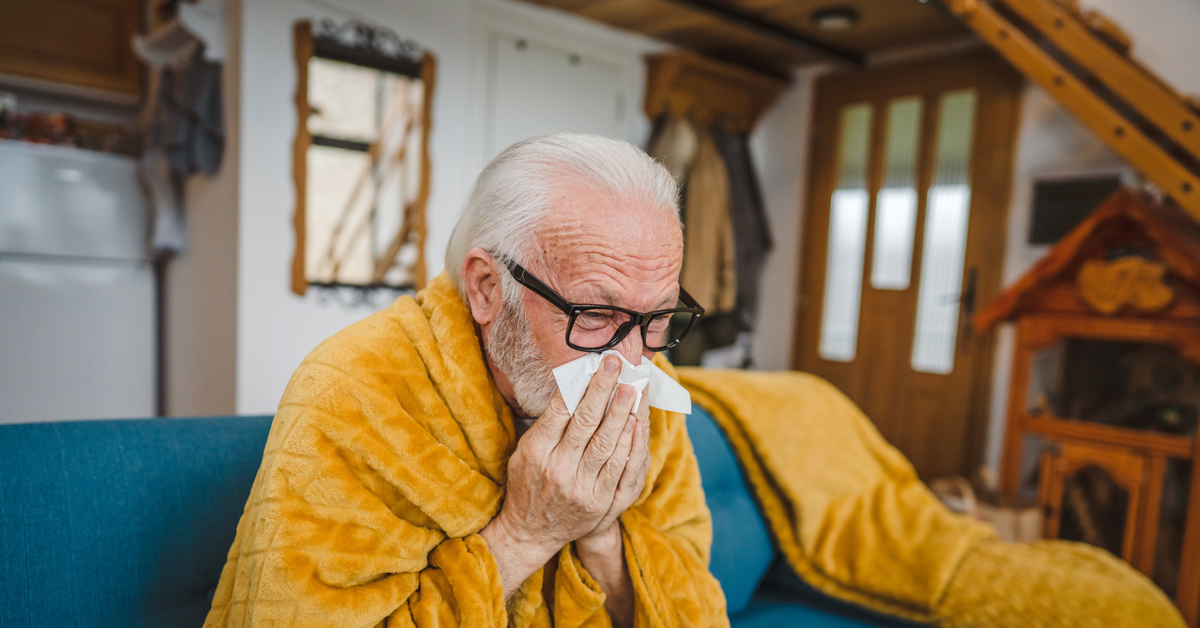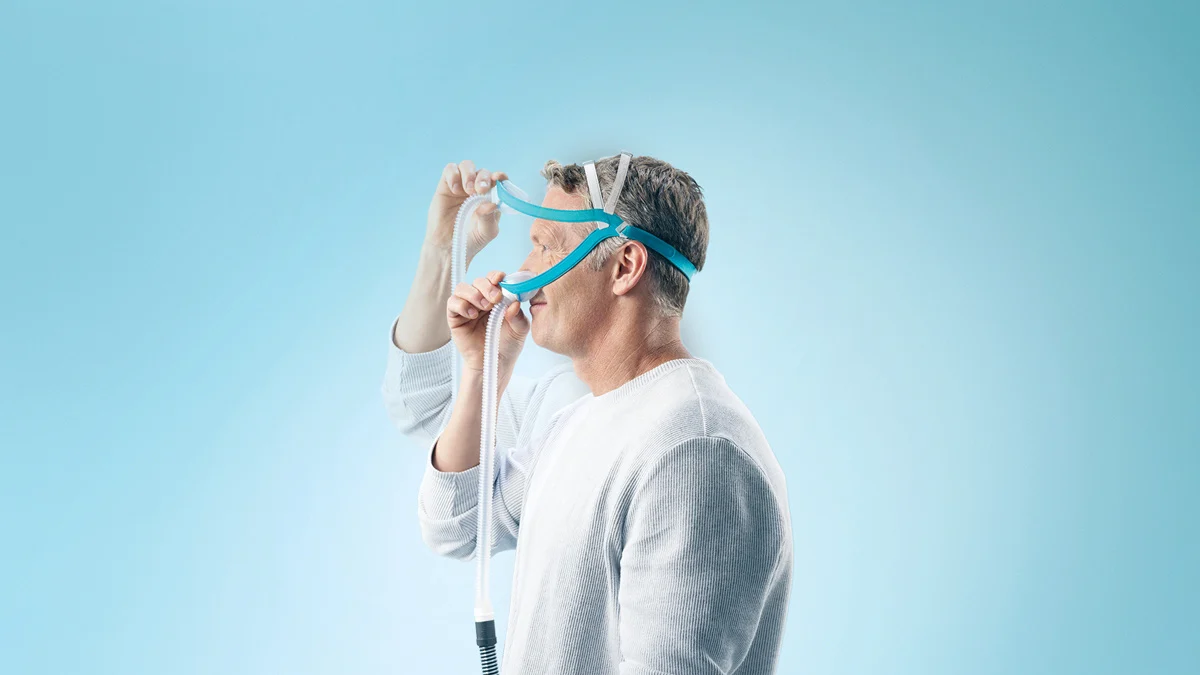What You Need to Know About This Effective Treatment for COPD
More than 1.5 million Americans use oxygen therapy (also called supplemental oxygen) to effectively manage COPD (chronic obstructive pulmonary disease) and other respiratory conditions. Oxygen concentrators are among the most popular forms of therapy to deliver oxygen. (Compressed oxygen in tanks and liquid oxygen are also widely used.)
Research reveals that oxygen concentrators offer a variety of important health benefits:
- Increase length of life
- Decrease shortness of breath and breathlessness
- Enhance mental attentiveness
- Boost energy levels and reduce fatigue
- Improve stamina and mood
- Help you sleep better
How Oxygen Concentrators Work
Oxygen concentrators are devices that pull air from your surroundings. They then separate and remove nitrogen and other impurities and deliver up to 95% pure oxygen for you to breathe, so you never run out of oxygen.
Oxygen is delivered via a nasal cannula, which is a thin tube with prongs inserted into your nose. Some people prefer a facemask, especially those who can’t tolerate a nasal cannula or need a higher oxygen flow rate.
Other components of oxygen concentrators include:
- Sieve filters and filter beds to capture impurities
- Humidifier to provide moisture to prevent nose and mouth dryness
- Pressure valve
- Compressor
- An oxygen tank or cylinder (included with some models)
The Two Types of Oxygen Concentrators
Stationary oxygen concentrators run on electricity and require access to an electrical outlet. These are usually used at home and have handles and wheels to allow you to move them more easily.
Portable oxygen concentrators are battery-powered. These are smaller and lighter than the stationary version, so you can carry them with you when you leave your home—either on errands or vacations.
The Pros of Oxygen Concentrators
No need to refill: Unlike oxygen tanks or liquid oxygen, which eventually run out of oxygen, oxygen concentrators don’t need to be refilled.
Conveniently portable: Portable oxygen concentrators are designed for ease of use when you are “on the go.”
Low maintenance: Oxygen concentrators require only one-time installation. Other than light cleaning and routine checks, they don’t need much maintenance.
More safety, less waste: Oxygen concentrators offer more safety features than oxygen tanks, which have much higher rates of leakage and oxygen waste.
The Cons of Oxygen Concentrators
You need a power supply: Stationary oxygen concentrators require reliable and consistent access to a power source, which can result in higher electric bills and make travel challenging.
You need to replace filters regularly: Filters ensure the oxygen you breathe is free of contaminants. Filters must be changed often—sometimes 3 times per week—which can add up over time.
7 Steps To Using an Oxygen Concentrator
1. Before using the oxygen concentrator, locate the liter control valve or switch. It may be numbered either in LPM (liters per minute) or in increments of 1, 2, 3, etc. This knob should be adjusted to provide the prescribed volume of oxygen per minute. Your doctor will guide you on the right setting.
2. Because of its high power consumption, the oxygen concentrator should be the only appliance plugged into an outlet. When you turn your device on, you’ll hear a “hum” as it powers up. Double-check the status lights to ensure everything is running well.
3. The oxygen concentrator's air-cycling process needs time to reach the desired concentration. For best results, the oxygen concentrator should be turned on 15-20 minutes before use.
4. When operating, the oxygen concentrator becomes quite hot and needs room for air circulation to cool it down. Be sure to place it away from any nearby furnishings and a foot or two away from walls or pieces of furniture.
5. If the oxygen flow rate is more than 2-3 LPM, your doctor may prescribe a humidifier as part of your treatment. Attach the humidification bottle into the oxygen concentrator's outlet, turn the bottle's cap clockwise until it clicks into place on the machine, and then fill it with distilled or filtered water.
6. Humidification bottles can be connected to any oxygen tubing. First you would need to fill the bottle with water by unscrewing the top and adding water to the maximum line. Do not overfill the bottle as this could result in water accumulating in your tubing. Replace the lid and attach the assembled humidifier bottle to your concentrator. You may see a few bubbles in the water which is normal.
7. The oxygen concentrator includes an air input sieve filter and an air inlet filter to keep the air free of dust and allergens. You’ll find them on the side of your device. If the filters need to be removed or replaced for cleaning, do so before using your device. For best results, remove and clean the air input sieve filter and air inlet filter once a week. Ensure they are thoroughly dry before using.
Tips for Using an Oxygen Concentrator at Home
- Use the oxygen flow rate prescribed by your doctor; avoid changing settings on your own.
- To ensure that your oxygen intake is unobstructed, double-check that the tubing isn’t kinked or bent, which can result in insufficient oxygen supply.
- Make sure your facemask fits comfortably and securely to prevent air leaks, which can cause eye irritation.
For optimal oxygen intake when using a nasal cannula, position the cannula so it enters your nostrils upward. - Regularly clean and maintain your oxygen concentrator to prevent the buildup of bacteria and mold. Learn more about cleaning oxygen delivery systems.
- Never use your oxygen concentrator near an open flame.
- Although very reliable, your oxygen concentrator sometimes malfunction. Learn more about troubleshooting your oxygen concentrator.
Breathe More Easily With Oxygen Concentrators
Your doctor will help you select the most appropriate oxygen concentrator and determine the best oxygen flow rate to help you effectively manage your COPD.
Also, feel free to contact Apria Respiratory Care with any questions you may have. As a leader in the field of COPD management, we provide customized, quality care for patients who are experiencing breathing problems.
References
1. (2022, November 17). Oxygen Therapy: Oxygen Delivery Devices and Accessories. American Lung Association. https://www.lung.org/lung-health-diseases/lung-procedures-and-tests/oxygen-therapy.
2. (2023, August 4). Oxygen Concentrators. Cleveland Clinic. https://my.clevelandclinic.org/health/treatments/25183-oxygen-concentrators.
3. (2023, January 26). How Does An Oxygen Concentrator Work: Ultimate Guide. ApriaDirect. https://blog.apriadirect.com/blog/how-does-an-oxygen-concentrator-work-ultimate-guide.
4. Starkman, E. (2021, July 29). What Is an Oxygen Concentrator? WebMD. https://www.webmd.com/lung/oxygen-concentrator-what-is.
5. Hardavella G, Karampinis I, Frille A, Sreter K, Rousalova I. Oxygen devices and delivery systems. Breathe (Sheff). 2019 Sep;15(3):e108-e116.
6. Stubblefield, H. (Updated 2017, July 9). Oxygen Therapy. Healthline. https://www.healthline.com/health/oxygen-therapy.
LEGAL DISCLAIMER: Material in this newsletter is provided for general health education and informational purposes and to provide references to other resources only; it may not apply to you as an individual. While Apria Healthcare believes that the information provided through this communication is accurate and reliable, Apria Healthcare cannot and does not make any such guarantee. It is not intended to be a replacement for professional medical advice, evaluation, diagnosis, services or treatment (collectively, “medical treatment”). Please see your healthcare provider for medical treatment related to you and your specific health condition(s). Never disregard medical advice or delay seeking medical care because of something you have read on or accessed through this website. Reading this newsletter should not be construed to mean that you have a healthcare provider/patient relationship.

.jpg?width=1120&height=376&name=AD-EmailBanner-BestSellingRespiratory%20(1).jpg)




